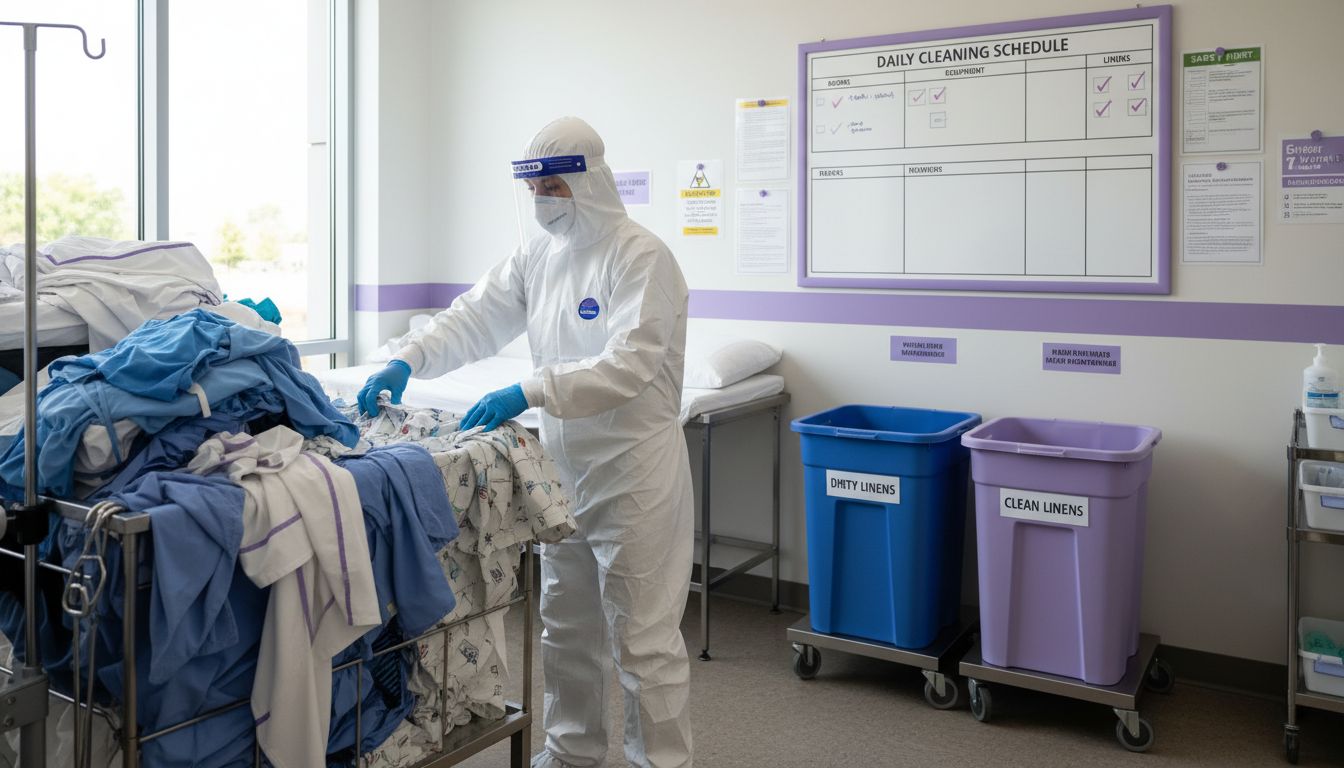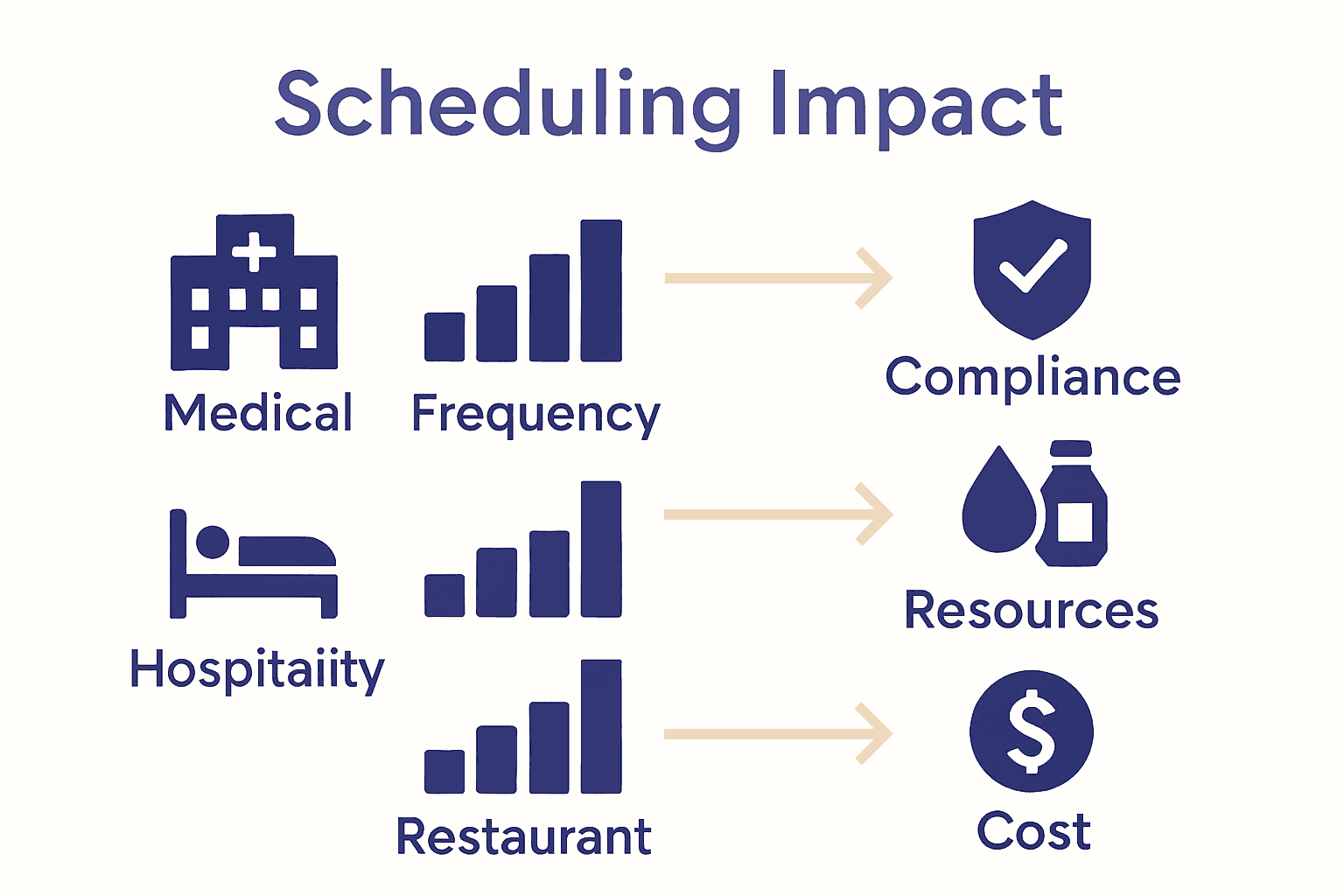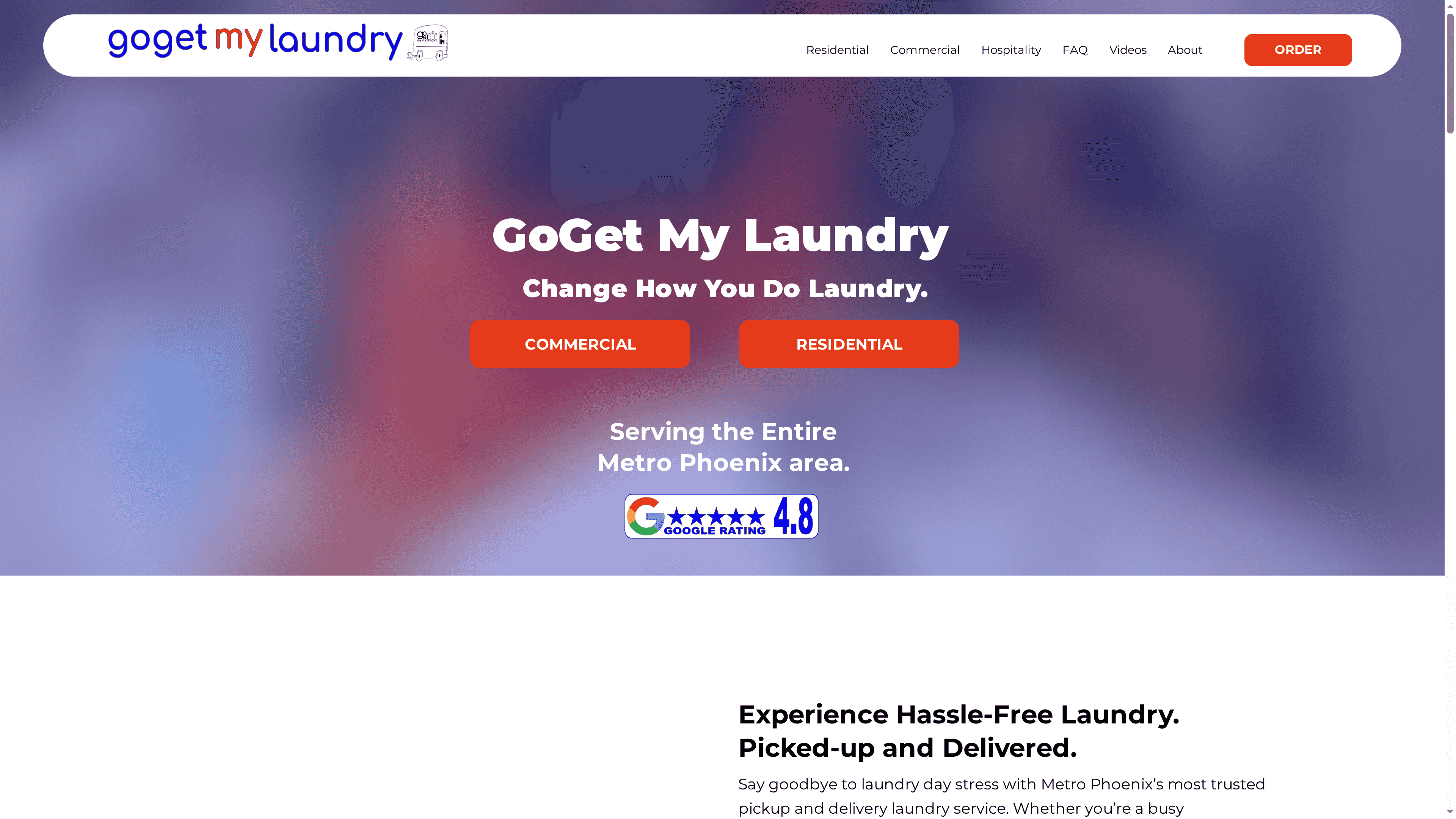Laundry Frequency for Businesses: Complete Guide
- Sarah Huber
- Nov 13
- 6 min read

Laundry needs can change dramatically from one business to another. For example, industrial operations may require up to 260 cleaning days each year, reflecting how crucial regular laundering is to daily workflows. From medical clinics to busy restaurants, every sector faces unique challenges in keeping linens, uniforms, and equipment clean. This guide breaks down the factors shaping commercial laundry schedules so your company can make informed, cost-effective decisions that keep operations running smoothly.
Table of Contents
Key Takeaways
Point | Details |
Variable Laundry Frequency | Laundry frequency varies greatly by industry, driven by factors such as hygiene standards and textile volume. Businesses must assess their unique operational needs to determine optimal schedules. |
Importance of Compliance | Adherence to health, safety, and compliance standards is vital in commercial laundry operations to ensure worker safety and prevent cross-contamination, especially in sensitive industries like healthcare. |
Cost Management Strategies | Businesses should consider various cost factors, including equipment, labor, and resource consumption when developing laundry management strategies to balance efficiency and expenses. |
Tailored Service Solutions | Partnering with specialized commercial laundry services can offer flexibility, advanced technologies, and expert knowledge, enhancing operational effectiveness and aligning with specific business needs. |
Defining Laundry Frequency for Businesses
Laundry frequency for businesses isn’t a one-size-fits-all concept. It varies dramatically across different industries and operational requirements. According to EPA, cleaning frequencies align closely with standard business operations, typically maxing out around 260 days per year for industrial settings.
Understanding laundry frequency requires examining several critical factors unique to each business type. For instance, a medical clinic will have dramatically different laundering needs compared to a small restaurant or a personal service provider. The key considerations include:
Volume of textiles used daily
Hygiene and sanitation requirements
Type of industry (medical, hospitality, personal services)
Fabric durability and replacement costs
Operational budget for laundering services
As Purdue University research indicates, cleaning frequencies can range from daily to weekly depending on specific operational contexts. Commercial businesses must strategically balance cleanliness, efficiency, and cost-effectiveness when determining their ideal laundry schedule.

For many small to medium enterprises, partnering with a specialized commercial laundry service can provide a strategic solution. These services offer flexible scheduling, advanced cleaning technologies, and professional expertise that help businesses maintain high standards without managing complex internal laundry operations.
Industry Variations and Key Differences
Laundry requirements demonstrate remarkable diversity across different business sectors, with each industry presenting unique challenges and standards. According to EPA, cleaning frequencies can significantly vary, with public and commercial buildings typically maintaining cleaning schedules around five days per week, while other facilities like retail spaces and warehouses might require entirely different approaches.
The laundry frequency for various industries breaks down into distinct categories, each with specific operational demands:
Medical Services: Highest hygiene standards, requiring daily or immediate laundering
Hospitality: Frequent linen replacement, multiple washes per day
Restaurants: High-volume uniform and towel cleaning
Personal Services: Regular sanitization of work attire and linens
Event Services: Intensive, project-based laundering needs
Purdue University research highlights that cleaning standards are not just about frequency, but also about specific area requirements. For instance, locker rooms might demand daily disinfection, while office carpets could be maintained on a weekly schedule.
Understanding these nuanced differences is crucial for businesses seeking to optimize their laundry operations. By recognizing industry-specific demands, companies can develop targeted commercial laundry strategies that balance cleanliness, efficiency, and cost-effectiveness.
Health, Safety, and Compliance Standards
Health and safety standards are paramount in commercial laundry operations, with stringent regulations governing every aspect of the process. OSHA emphasizes the critical importance of adhering to comprehensive safety guidelines that protect workers and ensure operational integrity across various business environments.
Key compliance requirements for commercial laundry services include:
Proper personal protective equipment (PPE) for workers
Regular equipment maintenance and safety inspections
Comprehensive staff training on hazard prevention
Precise handling of potentially contaminated textiles
Strict chemical management and storage protocols
Appropriate waste disposal procedures
Specifically, OSHA’s regulation 1910.264 provides detailed guidelines for laundry machinery operations, mandating specific safety practices that businesses must implement. This includes requirements for machine guards, electrical safety, and operational procedures designed to minimize workplace risks.
For businesses like medical facilities, hospitality services, and personal care providers, compliance goes beyond basic safety. These industries must maintain rigorous sanitization standards that prevent cross-contamination and protect public health. Partnering with a professional commercial laundry service can help businesses navigate these complex regulatory landscapes while ensuring consistent, high-quality cleaning that meets or exceeds industry standards.
Cost Implications and Resource Management
Managing laundry resources effectively requires a strategic approach that balances operational costs with cleaning efficiency. EPA research highlights the critical role of resource management in industrial laundry operations, particularly focusing on two primary cost drivers: chemical usage and water consumption.
Businesses must consider multiple cost factors when developing their laundry management strategy:
Initial equipment investment
Ongoing maintenance expenses
Chemical and detergent costs
Water and energy consumption
Labor and staffing requirements
Textile replacement and maintenance
Potential outsourcing versus in-house processing
EPA’s documentation suggests that cleaning frequencies directly impact resource allocation, with businesses needing to find a delicate balance between maintaining cleanliness and controlling operational expenses. This means developing a nuanced approach that considers both the immediate cleaning needs and long-term financial sustainability.
For many businesses, partnering with a professional commercial laundry service offers a strategic solution. These services can help optimize resource management by providing scalable, efficient cleaning solutions that reduce overall operational costs, minimize equipment investments, and allow businesses to focus on their core competencies.

Best Practices for Scheduling Services
Effective laundry service scheduling requires a strategic approach that balances operational needs with service efficiency. Purdue University offers comprehensive insights into developing systematic cleaning routines that can be adapted across various business environments.
Key scheduling considerations for businesses include:
Assessing peak operational hours
Understanding seasonal variations in laundry volume
Establishing consistent pickup and delivery windows
Creating flexible service arrangements
Implementing predictive maintenance schedules
Developing contingency plans for unexpected laundry surges
Aligning service schedules with business workflow
St. Olaf College facilities management research emphasizes the importance of developing customized scheduling strategies that accommodate unique organizational requirements. This means moving beyond generic scheduling templates and creating tailored approaches that reflect each business’s specific operational rhythms.
Businesses can optimize their laundry service scheduling by leveraging technology and partnering with flexible commercial laundry providers. These partnerships enable real-time scheduling adjustments, transparent tracking, and adaptable service models that can scale with changing business demands.
Streamline Your Business Laundry Needs with GoGet My Laundry
Managing laundry frequency for your business involves balancing hygiene, compliance, and cost efficiency. Whether you need daily sanitization for medical uniforms or regular cycles for hospitality linens, finding the right service schedule can be overwhelming. The challenges of adhering to safety standards and resource management make a flexible, professional laundry partner essential.
GoGet My Laundry offers tailored commercial laundry services designed to meet your exact industry requirements. We use advanced commercial extractor washers to reduce wear and extend textile life. Our flexible scheduling options and reliable same-day pickup help you maintain top cleanliness standards without disrupting your operations. Trust us to handle everything from uniforms to event linens with precision and care.

Ready to optimize your business laundry routine and meet safety standards effortlessly? Discover our full range of commercial laundry services and schedule your first pickup today at GoGet My Laundry. Don’t wait—experience hassle-free laundry management tailored for your business now.
Frequently Asked Questions
How often should businesses perform laundry?
The laundry frequency for businesses varies based on industry needs, with most commercial operations cleaning textiles anywhere from daily to weekly. Medical services typically require daily laundering, while hospitality may have multiple washes per day.
What factors influence laundry frequency for businesses?
Key factors include the volume of textiles used daily, hygiene and sanitation requirements, the type of industry, fabric durability, and the operational budget for laundry services.
Why should businesses consider using a commercial laundry service?
Partnering with a commercial laundry service can provide businesses with expertise, flexible scheduling, advanced cleaning technologies, and cost-effective solutions, allowing them to maintain high cleanliness standards without managing in-house laundry operations.
What are the compliance standards for commercial laundry operations?
Compliance standards include the use of proper personal protective equipment (PPE), regular equipment maintenance, staff training on safety protocols, and strict chemical management, ensuring that operations adhere to health and safety regulations.
Recommended

Comments